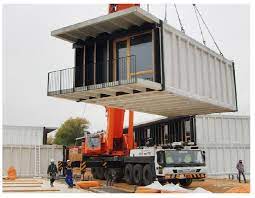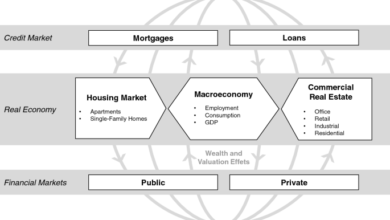The Popularity of Real Estate Investment in Student Housing and Co-Living Spaces

In recent years, the real estate industry has seen a surge in the popularity of investing in student housing and co-living spaces. With more and more students and young professionals opting for these living arrangements, the demand for purpose-built student accommodation (PBSA) and co-living spaces has skyrocketed. In this article, we will explore the reasons behind this trend, the benefits of investing in these properties, and what the future holds for the student housing and co-living market.
Understanding the Market
Before diving into the reasons behind the increasing popularity of investing in student housing and co-living spaces, it is important to understand the market. According to a report by JLL, the global PBSA market is expected to reach $200 billion by 2025, with Asia Pacific being the largest market. In the US, the demand for PBSA has been steadily increasing, with an estimated 1.5 million students in higher education institutions in the country requiring accommodation.
Reasons for Popularity
Changing Lifestyles
One of the main reasons for the growing popularity of student housing and co-living spaces is the changing lifestyles of millennials and Gen Z. Unlike previous generations, these age groups value experiences and community over material possessions. As a result, they are more likely to seek out shared living arrangements that offer a sense of community and shared experiences.
Convenience
Another reason for the popularity of student housing and co-living spaces is the convenience they offer. These living arrangements are often located close to universities, making it easy for students to attend classes and access amenities. Additionally, many co-living spaces offer a range of amenities, such as gyms, coworking spaces, and communal kitchens, making it easy for residents to live, work, and socialize in one place.
Affordable Housing
Student housing and co-living spaces are often more affordable than traditional apartment living, making them an attractive option for students and young professionals who are looking to save money. In many cases, these properties offer all-inclusive rents, meaning that residents don’t have to worry about additional costs such as utilities and internet.
Rising Demand
Finally, the popularity of investing in student housing and co-living spaces can be attributed to the rising demand for these properties. With an increasing number of students and young professionals seeking out shared living arrangements, the demand for purpose-built accommodation has grown significantly in recent years.
Benefits of Investing in Student Housing and Co-Living Spaces
Now that we’ve explored the reasons behind the growing popularity of student housing and co-living spaces, let’s take a look at the benefits of investing in these properties.
High Yield Potential
Investing in student housing and co-living spaces can be highly lucrative, with the potential for high yields. According to a report by Knight Frank, the average net yield for PBSA in the UK was 5.5% in 2020, compared to 4.4% for traditional residential properties.
Long-term Investment
Investing in student housing and co-living spaces can also be a long-term investment, with the potential for steady rental income over a period of several years. As the demand for purpose-built accommodation continues to grow, these properties are likely to remain in high demand for the foreseeable future.
Resilience to Economic Downturns
Another benefit of investing in student housing and co-living spaces is their resilience to economic downturns. During times of economic uncertainty, students and young professionals are often more likely to seek out shared living arrangements that offer affordable housing and a sense of community.
Future of the Market
The future of the student housing and co-living market looks promising. According to a report by Savills, the global co-living market is expected to grow at a CAGR of 17.0% between 2020 and 2025, reaching a value of $15.8 billion by 2025. This growth is expected to be driven by increasing demand from millennials and Gen Z, who are looking for affordable, convenient, and community-focused living arrangements.
In addition to this, the COVID-19 pandemic has highlighted the importance of purpose-built accommodation, with many students and young professionals seeking out safe and hygienic living arrangements. As a result, there is likely to be even greater demand for student housing and co-living spaces in the coming years.
Challenges of Investing in Student Housing and Co-Living Spaces
While investing in student housing and co-living spaces can be highly lucrative, there are also some challenges to consider.
Regulation
One of the main challenges of investing in these properties is regulation. In some countries, there are strict regulations surrounding the development and management of PBSA and co-living spaces, which can make it difficult for investors to navigate the market.
Management
Another challenge of investing in student housing and co-living spaces is management. These properties require a high level of management, including maintenance, tenant management, and marketing. As a result, investors need to be prepared to invest time and resources into managing their properties effectively.
Competition
Finally, there is the challenge of competition. As the popularity of student housing and co-living spaces continues to grow, there is likely to be increased competition in the market, making it more difficult for investors to find profitable opportunities.
Conclusion
Investing in student housing and co-living spaces can be a highly lucrative and rewarding investment opportunity. With the growing demand for purpose-built accommodation, the potential for high yields, and the resilience of these properties during economic downturns, it’s easy to see why more and more investors are turning to this market. However, it’s important to consider the challenges of investing in these properties, such as regulation, management, and competition, before making any investment decisions.



